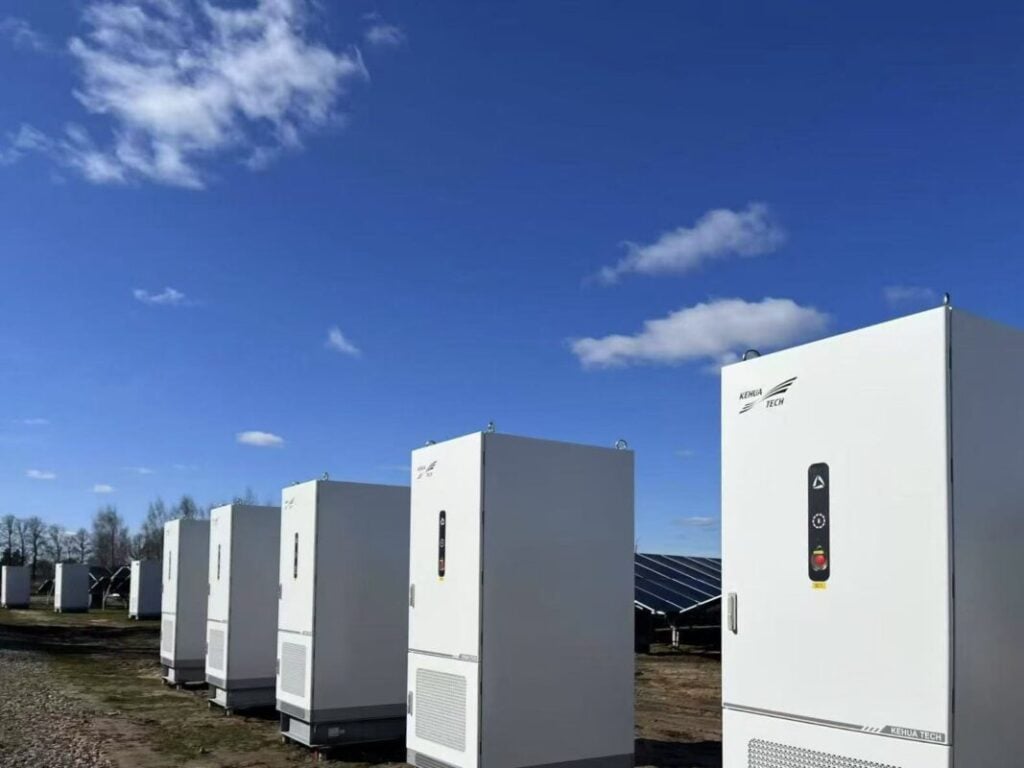
Kehua’s C&I liquid-cooled S³-EStore systems have been deployed at a Latvian industrial facility, ensuring uninterrupted participation in ancillary markets, the project demonstrating how modular energy storage solutions can proactively address safety challenges while maintaining critical grid service continuity.
Central to this deployment is the system’s liquid-cooling thermal feature, which maintains battery cell temperature differentials within a razor-thin ±1.5°C range, even under extreme climatic swings—from -30°C in winter to 40°C during summer.
The plant’s adoption of the cabinet-based S³-EStore units, rather than centralized container systems, reduces the risk of fire spreading through physical separation while ensuring operational continuity. Kehua’s distributed architecture enhances system resilience, enabling continuous Frequency Containment Reserve (FCR) service even during partial cabinet isolation. This design aligns with Baltic grid codes, requiring ancillary service providers to maintain operational continuity under predefined fault scenarios.
To overcome the industry-wide challenge of poor efficiency in battery energy storage systems (BESS) and power conversion systems (PCS) at low power outputs, the project implements proprietary software algorithms. By sequentially activating cabinets with a minimum 20% power threshold during stable grid conditions, the system maintains optimal efficiency while preserving rapid FCR response capabilities—a critical balance for revenue-generating ancillary market participation.
The cabinet-level modularity also enables maintenance without plant downtime. Technicians can isolate individual units for servicing via SCADA systems while the remaining cabinets continue delivering grid services. This “always-on” approach ensures uninterrupted revenue streams from frequency regulation markets, a key advantage given the Baltic TSO’s emphasis on emergency response reliability.
